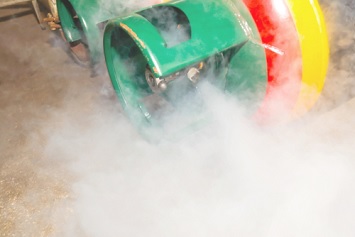In one of its rare regulatory actions directly affecting the regulated community, the U.S. Chemical Safety and Hazard Investigation Board (CSB or the Board) has issued a final rule requiring owners and operators of stationary sources to report information about accidental releases of hazardous substances to the CSB.
The rule has both generalized and more specific components. For example, reporting is required for releases of both regulated hazardous substances (that is, substances listed in federal laws or regulations issued by other agencies) and any other “extremely hazardous substance” whether or not such substances are included in existing regulatory lists. In terms of specifics, reporting is required only if the accidental release results in a fatality, a serious injury, or substantial property damage. Some (but not all) accidental releases that meet these criteria must be reported to the National Response Center (NRC). To minimize overlap, the CSB has included in its rule a provision that owners/operators of stationary sources that have reported an accidental release subject to the CSB’s rule to the NRC need only provide the CSB with the NRC identification number for the incident. Some types of accidental releases must also be reported to the EPA and OSHA, but the CSB has not attempted to eliminate reporting duplication that may occur because of these additional reporting requirements.
Below we summarize the background of the reporting rule, key provisions, and issues the CSB wrestled with while writing the rule.
Background
The CSB was established by the Clean Air Act (CAA), as amended in 1990, to investigate any accidental chemical release that results in a fatality, a serious injury, or substantial property damage. (The Board was not actually formed until 1998.) Congress designed the CSB to be independent of other agencies so that its investigations might, where appropriate, review the effectiveness of regulations and regulatory enforcement by those agencies. Notwithstanding the current rule, the CSB views itself as “nonregulatory.” The CSB believes its principal tools for “achieving positive change” are new safety recommendations it provides to government agencies, companies, trade associations, labor unions, and other groups. Despite the way the CSB views its mission, the CAA directed the Board to “establish by regulation requirements binding on persons for reporting accidental releases into the ambient air subject to the Board’s investigatory jurisdiction.” The CSB appeared to have little interest in promulgating the reporting rule or insufficient resources to tackle the task. It was not until 2009 that the Board produced an advance notice of proposed rulemaking. But the CSB did not follow up on that action.
In May 2018, a group of organizations petitioned the U.S. District Court for the District of Columbia to order the CSB to meet its statutory responsibility to promulgate an accidental-release reporting rule. The CSB contended that the plaintiffs, which included groups concerned about the safety and environmental impact of the Gulf Coast’s petrochemical industry, lacked standing to sue. The court rejected this argument. Accepting its loss, the CSB asked the court to give it 24 months to finalize a rule, noting that it is a small agency that must devote almost all its resources to accident investigations and follow-up reports and recommendations. (In recent years, the CSB has also been struggling with management issues, the loss of investigators, and efforts by the Trump administration to eliminate the Board entirely.) The court was not sympathetic, pointing out that the statutory requirement to issue the reporting rule has been on the books for nearly 30 years. Accordingly, the court ordered that a proposal and final rule be issued within 12 months. In a news release announcing the final rule, Kristen Kulinowski, PhD, the CSB’s interim executive, said completing the regulation was a “daunting task,” but she was “confident that the rule will achieve its intended purpose in a manner that will help improve the CSB’s safety mission.”
Objective
In the preamble to the rule, the CSB states that the purpose of the action is to assist the CSB in making “deployment decisions”—that is, whether and when to send its investigators to the site of an accidental release. The CSB states:
“The CSB has learned over its history that prompt deployment (within 24 hours following an accidental release) helps satisfy several legitimate objectives: Preservation of key physical evidence and obtaining witness testimony while the information regarding the release is fresh. Prompt arrival of CSB investigators also allows them to gain an understanding of what changes may have been made to an accident scene during emergency response (e.g., what valves were turned, or what equipment was moved). Prompt deployment also facilitates quicker implementation of an appropriate evidence and site control agreement among the parties to an investigation.”
Contents and time frame
The CSB believes that a deployment decision about an accidental release can be aided based on the following information about the accidental release, which must be included in the report:
- The name of, and contact information for, the owner/operator
- The name of, and contact information for, the person making the report
- The location information and facility identifier (that is, the EPA facility identification number)
- The approximate time of the accidental release
- A brief description of the accidental release
- Indication of whether one or more of the following has occurred:
- Fire
- Explosion
- Death
- Serious injury
- Property damage
- The name of the material(s) involved in the accidental release, the Chemical Abstract Service (CAS) number(s), or other appropriate identifiers
- If known, the amount of the release
- If known, the number of fatalities
- If known, the number of serious injuries
- Estimated property damage at or outside the stationary source
- Whether the accidental release has resulted in an evacuation order impacting members of the general public and others, and, if known:
- The number of persons evacuated
- Approximate radius of the evacuation zone
- The type of person subject to the evacuation order (i.e.,employees, members of the general public, or both)
The above elements either must be reported or must be reported if known. The preamble to the rule includes a discussion of two somewhat conflicting considerations—the need for the CSB to obtain information about the accidental release as quickly as possible and the provision of sufficient time for the owner/operator to obtain the required information. In its proposed rule, the CSB had sought to require that the report be provided to the CSB no more than 4 hours after the accidental release. Commenters said this was not enough time to gather all the requested information; the CSB agreed, and the final rule extended the reporting window to 8 hours. Furthermore, the final rule includes a provision that gives owners/operators 30 days to update or revise the initial report; moreover, the rule provides 90 days for updates or revisions if the submitter explains why the revised report could not have been submitted within 30 days.
Definitions
Several definitions included in the final regulation are key to understanding the applicability of the rule.
Ambient air. Provided other factors are satisfied, accidental releases into the ambient air must be reported. The rule defines ambient air as “any portion of the atmosphere inside or outside a stationary source.” [emphasis added] Some commenters on the proposal objected that the requirement to report releases inside a facility is contrary to the CAA, which does not regulate indoor air. The CSB responded that while ambient air is used many times in the CAA, there is no statutory definition of ambient air in the Act. “The CSB possesses the independent authority to define the term as appropriate for purposes of implementing a reporting rule,” states the CSB.
Serious injury is defined as “any injury or illness that results in death or inpatient hospitalization.” Inpatient hospitalization means “a formal admission to the inpatient service of a hospital or clinic for care.” The final serious injury definition differs considerably from the one the CSB proposed, which would have required reporting if the accidental release caused “any injury that resulted in one or more days away from work; restricted work or transfer to another job; [or] medical treatment beyond first aid.” At proposal, the CSB estimated that under this definition, owners/operators would be reporting about 200 accidental releases per year. Commenters on the proposal said that was an exceedingly low estimate, and owners/operators would, in fact, be reporting “thousands” of events annually. The CSB did not entirely agree with these estimates and said it would look further into the matter with the possibility of revising the definition. However, the CSB believes the comments raised sufficient doubt about the reach of the proposed definition. The CSB continues to estimate that approximately 200 reports will be submitted each year and that each report will take approximately 15 minutes for each respondent to complete and submit to the CSB.
Property damage is defined as “damage to, or the destruction of, tangible public or private property, including loss of use of that property.” Substantial property damage means “estimated property damage at or outside the stationary source equal to or greater than $1,000,000.” “This definition is well-established for purposes of commercial liability insurance policies, and therefore most owner/operators should be familiar with its meaning and have no difficulty in determining whether there has been any property damage,” states the CSB. “In addition, the definition confirms that pertinent property damage is not limited to the stationary source, but also includes damage to private property (e.g., homes) and public property outside the stationary source.”
NRC
As noted, if the owner or operator has submitted a report to the NRC, the CSB reporting requirement may be satisfied by submitting the NRC identification number to the CSB within 30 minutes of submitting the report to the NRC. Several federal laws require that certain accidental chemical releases be reported to the NRC. The CSB says that many commenters on the proposal urged the CSB to rely on the NRC for information instead of promulgating its own reporting rule. The CSB reminded these commenters that issuance of the rule is not discretionary since it is required by the CAA. However, even if the rule was not a statutory requirement, the CSB says that reliance on the NRC for information about which accidental releases should be investigated would fail to satisfy the reporting requirements. For example, the CSB says it screened 1,923 incidents from 2010 to July 15, 2019, that resulted in an injury or fatality. The CSB compared NRC reports it received during that time period with the information it had collected through other means. The CSB found that it had matching NRC reports for only 13.16 percent (253) of the incidents the CSB had identified through other means. One reason for this difference is that some laws do not require a report unless a threshold quantity of a regulated substance is released. The CSB’s rule has no threshold quantity provision.
Enforcement
The CAA provides the CSB with no independent enforcement authority and instructs the Board to refer violations of its rules to the EPA for civil or criminal enforcement. Historically, the CSB has learned of accidental releases primarily through news reports and the Internet. The CSB therefore says it is confident that most matters will come to its attention through its ongoing surveillance of accident activity. For 1 year following the March effective date of the rule, the CSB says it will contact any owner/operator that the Board believes has failed to file a required report. If a report is filed immediately following notification, the CSB will not refer the failure to report to the EPA. Also during the first year, the Board says it will focus resources on education and compliance, not on “creating traps for the unwary.”


